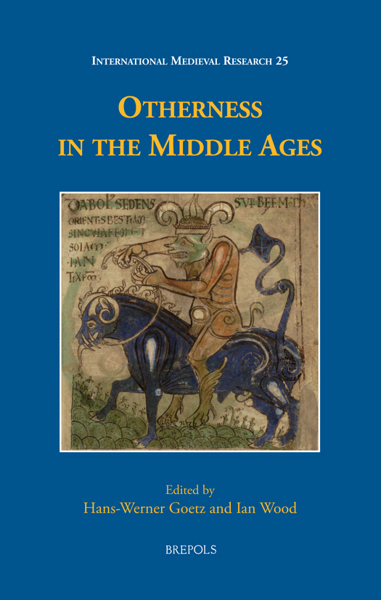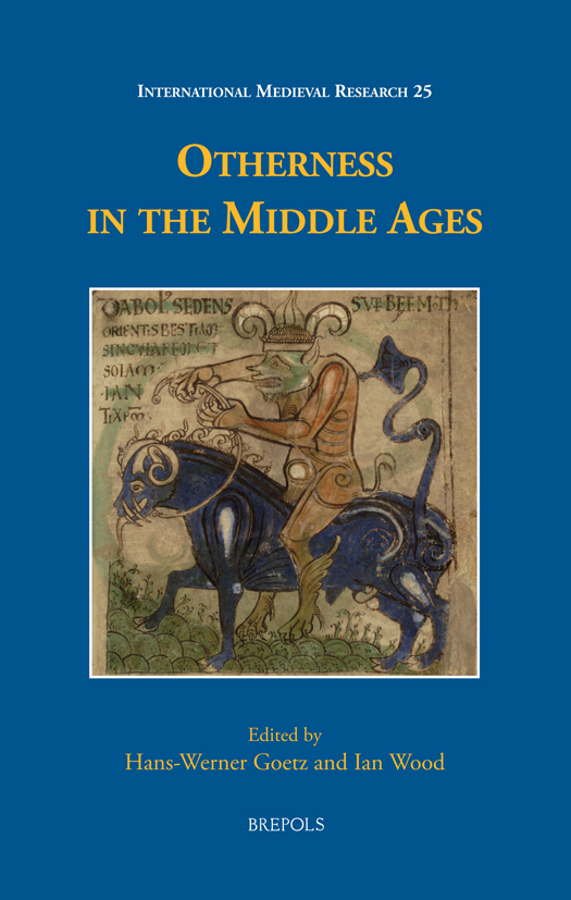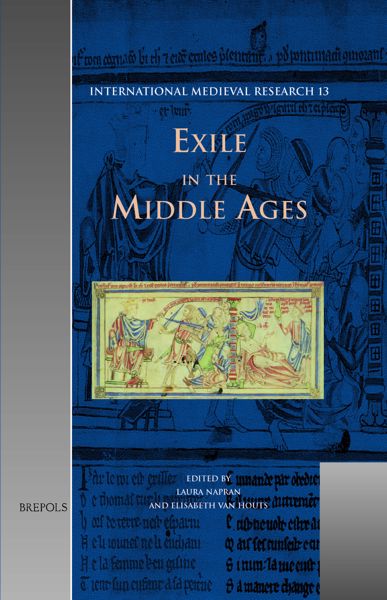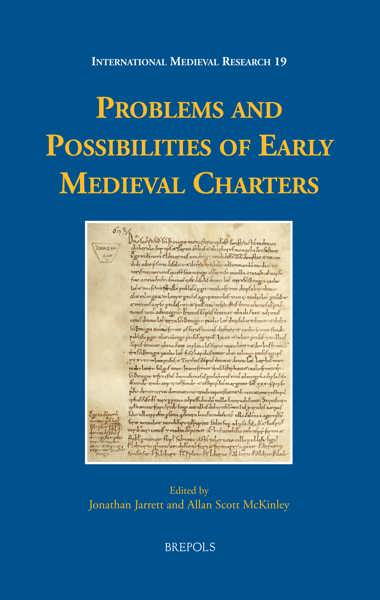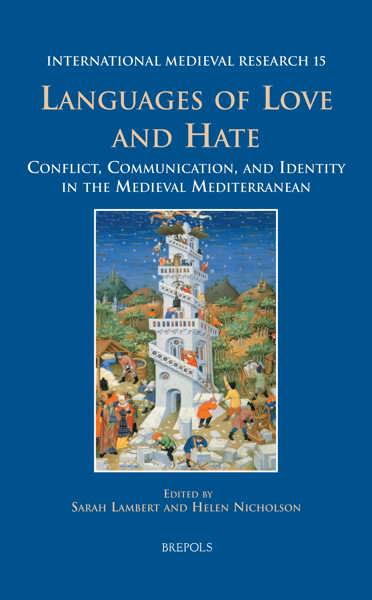
'Otherness' in the Middle Ages
Hans-Werner Goetz, Ian N. Wood (eds)
- Pages: 478 p.
- Size:156 x 234 mm
- Illustrations:25 b/w, 9 col., 4 maps b/w, 4 maps
- Language(s):English
- Publication Year:2022
- € 125,00 EXCL. VAT RETAIL PRICE
- ISBN: 978-2-503-59402-6
- Hardback
- Available
- € 125,00 EXCL. VAT RETAIL PRICE
- ISBN: 978-2-503-59403-3
- E-book
- Available
The most extensive collective volume on 'Otherness' in the Middle Ages so far
“This book is one of the most challenging and thought-provoking that I have read for a while.” (Lola Georgina Pitt, in Parergon, 40/1, 2023, p. 257)
“(…) il volume si sviluppa attraverso una serie di testi di oggettiva qualità, capaci di far riflettere lo specialista e aprendo nuove viste per il non specialista, senza che quest’ultimo si senta mai perso nel gergo tecnico di una disciplina a lui non familiare. Inoltre, la disparatezza dei saggi, sia sotto il profilo cronologico, che sotto quello geografico (essi infatti coprono un empo che si sviluppa dalla caduta dell’impero romano d’occidente al XV seco[1]lo e uno spazio che va dalla penisola iberica all’India e dalla Scandinavia al Nord Africa) non produce confusione nel lettore bensì l’impressione di confrontarsi con una panoramica dell’intera epoca presa in esame. Se dunque lo storico di professione vi potrà trovare lo stato dell’arte in merito a una questione dibattuta nella sua disciplina, il collega diversamente medievista vi potrà trovare una fonte di analisi con cui poter completare il proprio lavoro scientifico.” (Tommaso Manzon, in Studi Medievali, LXIV - Fasc. II, 2023, p. 940)
“For this reason, the prevalence of otherness in popular discourse makes this book a valuable addition to conversations about how we communicate, and teach, the global turn in medieval scholarship.” (Esther Liberman Cuenca, in SPECULUM, 99/2, 2024, p. 576)
« Dans la diversité des études réunies par ce fil directeur, ce volume constitue à ce jour la tentative la plus complète d’embrasser les multiples facettes du problème de l’altérité au Moyen Âge et il offre aux lecteurs spécialistes des ouvertures vers des analyses des processus de construction de l’altérité dans des sources et des espaces variés, des terrains qui sont autant de pistes demandant à être prolongées. » (Julia Roumier, dans le Moyen Âge, 3-4, 2023, p. 916)
"Allein durch die Vielfalt der behandelten Themen, aber auch, weil er größten Wert auf den reflektierten methodischen Zugriff legt und dafür hervorragende Angebote unterbreitet, kann der Band zukünftig als ein Referenzwerk für die mediävistische Alteritätsforschung dienen." (Christian Hoffarth, in Sehepunkte, 24, 2024)
Hans-Werner Goetz is professor emeritus of medieval history at the University of Hamburg, Germany.
Ian Wood is professor emeritus of medieval history at the University of Leeds.
Although ‘Otherness’ is an extremely common phenomenon in every society, related research is still at its beginnings. ‘Otherness’ in the Middle Ages is a versatile and complex theme that covers a great number of different aspects, facets, and approaches: from non-human monsters and cultural strangers from remote places up to foreigners from another country or another town; it can refer to ethnic, cultural, political, social, sexual, or religious ‘Otherness’, inside or outside one’s own community. In any case, however, ‘Otherness’ is a subjective phenomenon depending on personal views and ascriptions, an issue of ‘imagination’ and experience rather than ‘reality’. There is neither one single model of alterity nor is ‘Otherness’ a stable phenomenon, but it changes over time and according to the cultural context. All this calls for methodological reflection and needs thorough investigation.
The methodological introduction and the 18 contributions of this volume demonstrate the great diversity of the theme and its different manifestations and perspectives. They tackle the problem from distinct angles and disciplines (history, art history, archaeology, literary history, and philology) in a wide chronological and thematic frame, using different methodological approaches, dealing with different areas (from Northern and Southern Europe to Byzantium and India), perspectives (including law, social order, the past, a sea), and diverse kinds of sources. They examine all kinds of ‘Otherness’ mentioned above, highlight demarcation and rejection, aversion or acceptance, assimilation and integration, thus relativizing a strict dichotomy between ‘the Self’ and ‘the Other’ or between inside and outside. This volume is so far the most comprehensive attempt to tackle the huge problem of ‘Otherness’ in the Middle Ages.
Introduction: The Many Facets and Methodological Problems of ‘Otherness’ — HANS-WERNER GOETZ AND IAN WOOD
The Mediterranean Other and the Other Mediterranean: Perspectives of Alterity in Medieval Studies—NIKOLAS JASPERT
Strangers in the House of Israel: Confronting the Problems of Inner Diversity in Jewish Communal Ordinances at the End of the Middle Ages—MARTIN BORÝSEK
Between a Rock and a Hard Place? South-Italian Portrayals of Franks and Byzantines in the Ninth Century—CLEMENS GANTNER
The Construction of Allegiance and Exclusion in Erchempert’s Historia Langobardorum Beneventanorum—SOPHIE GRUBER
Other Genders, Other Sexualities: Crises of Identity in Medieval French Ovidian Narratives—SYLVIA HUOT
The Jew as the ‘Other’ in Word and Deed—ASTRID KHOO
Layers of ‘Otherness’: Appearance Defining and Disguising ‘Otherness’ in Byzantine Monasticism—NIKE KOUTRAKOU
The ‘Others’ from Within: Herders between Rural Communities and Venetian Governance on Late Medieval Korčula—FABIAN KÜMMELER
Assimilating ‘Otherness’ in Early Islam—EDUARDO MANZANO MORENO
The Familiar Stranger: Biblical Perception and Depiction of Muslims in Christian Chronicles of the Iberian Peninsula, c.900—PATRICK S. MARSCHNER
Not ‘the Other’: Barbarians and the End of the Western Roman Empire—RALPH W. MATHISEN
How ‘Other’ Was the Viking Otherworld?—MEGHAN MATTSSON MCGINNIS
Otherness as an Ideal: The Tradition of the ‘Virtuous’ Indians—YU ONUMA
Distinctive Signs and Otherness: The Depiction of Prophets, in the Late Fourteenth Century in the Cathedral of Toledo (Spain)—MARIA PORTMANN
‘It Was the Law Back Then’: The Viking Age as the Other in Medieval Scandinavian Legal Thought—ROLAND SCHEEL
The Other- Part of the World for Late Medieval Latin Christendom—FELICITAS SCHMIEDER
The Muslim Archother and the Royal Other: Aristocratic Notions of Otherness in Fourteenth-Century Portugal—TIAGO JOÃO QUEIMADA E SILVA
‘Otherness’ Within? The Sámi in Medieval Scandinavian Law—MIRIAM TVEIT
General Index
Index of Names and Subjects Related to Otherness
